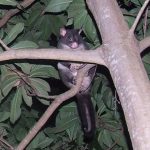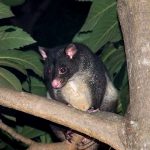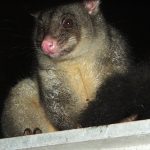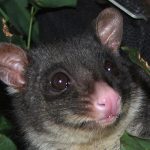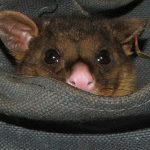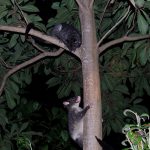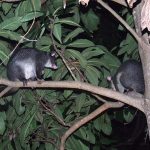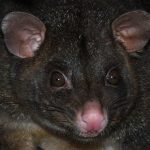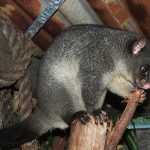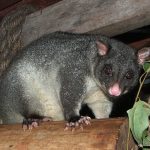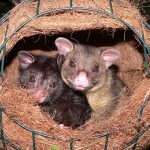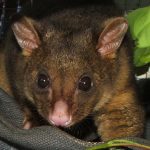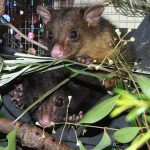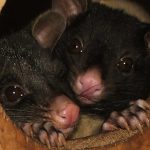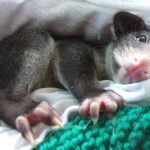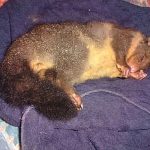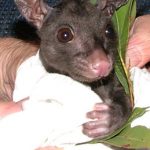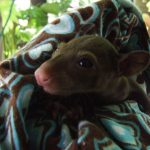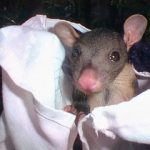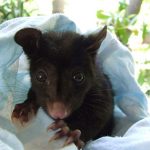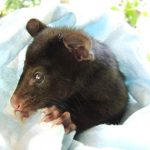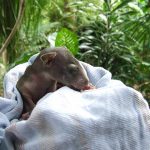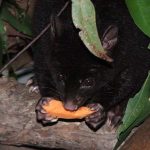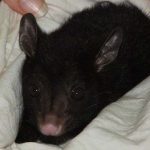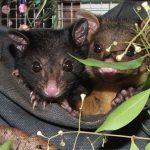SHORT-EARED BRUSHTAIL POSSUM
Trichosurus caninus
The Short-eared Brushtail Possum: Guardians of the Mountain Forests
Nestled high in the wet sclerophyll forests and cool temperate rainforests of southeastern Australia, the Short-eared Brushtail Possum—also known as the Mountain Brushtail Possum or Bobuck—quietly thrives. This remarkable marsupial is not only a symbol of Australia’s rich biodiversity but also a vital part of the forest ecosystem.
Physical Description
The Short-eared Brushtail Possum is impressively sized for an arboreal creature:
| Feature | Measurement | Description |
|---|---|---|
| Head & Body | 40–50 cm | Robust, with a sturdy build |
| Tail | 34–42 cm | Bushy on top, bare underneath and at the tip |
| Fur Colour | Varies by region | Olive grey (south), grey/golden/black/brown (north) |
Visual and Multi-Sensory Description
Imagine the gentle rustle of leaves as dusk settles over the forest. A large, soft-footed possum, its fur dappled in hues of olive grey or deep chocolate, glides silently from branch to branch. Its bushy tail, plush on top yet smooth and gripping underneath, acts as a natural anchor, wrapping securely around rough bark. The cool, damp scent of moss and earth lingers in the air as it pauses, nose twitching, alert to the subtle chorus of nocturnal life.
Life Cycle and Behaviour
Early Life
- Sexual Maturity: Reached at around 3 years old
- Birth: Females usually give birth to a single young
- Pouch Life: Approximately 120 days, providing warmth and protection
- Juvenile Stage: Young possums often ride on their mother’s back, clinging tightly as she navigates the treetops
Mortality rates can be high during this stage, making the mother’s care and experience vital for survival. Juveniles remain with their mothers longer than most other possum species, learning the secrets of the forest canopy.
Longevity
- Lifespan: Up to 17 years, possibly longer in undisturbed habitats
Habitat and Shelter
The Short-eared Brushtail Possum is deeply reliant on hollow logs in ancient trees for shelter. These natural homes provide safety from predators, stable microclimates, and places to rear young. The scent of decaying leaves and the tactile roughness of old bark are ever-present in their world.
Diversity in Appearance
From the olive-grey coats of the southern highlands to the shimmering golden, black, and brown shades of the north, their appearance is as diverse as the forests they inhabit. This regional variation is a testament to their adaptability and the unique conditions of their habitats.
Conservation Message
Every old tree in these forests tells a story—of decades, sometimes centuries, of growth and shelter. Before removing such trees, it’s essential to consider the lives they sustain, especially species like the Short-eared Brushtail Possum that depend on tree hollows for survival.
How You Can Help
- Protect old-growth forests and mature trees
- Support habitat conservation initiatives
- Respect possum territories and avoid disturbing their homes
Conclusion: Living Together
Possums, like the Short-eared Brushtail, are fiercely territorial and intricately connected to their environment. By appreciating their quiet resilience and the forests they call home, we can foster a future where these remarkable marsupials continue to thrive alongside us.
Let us be mindful stewards of the wild, ensuring that the story of the Short-eared Brushtail Possum endures for generations to come.


